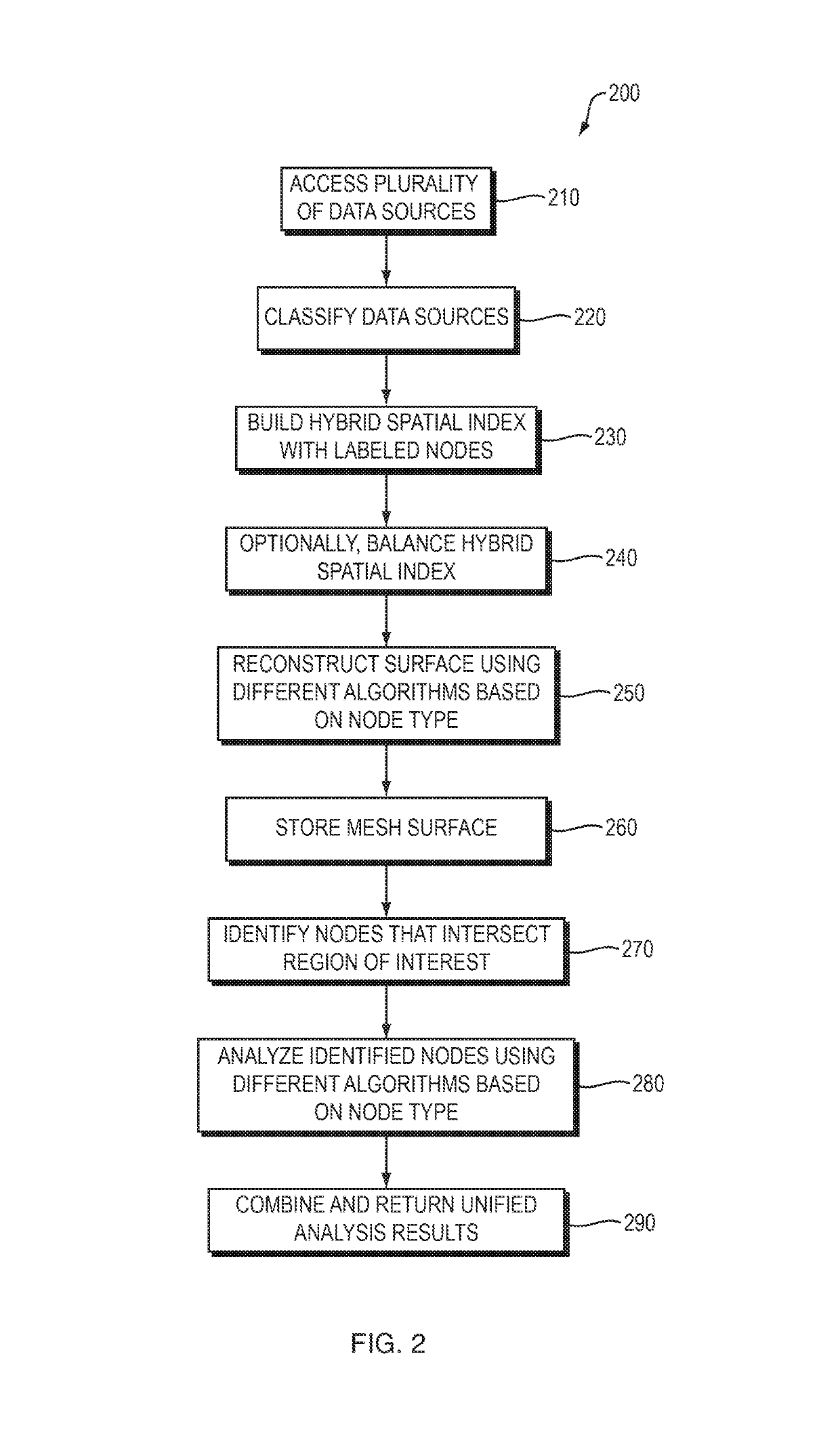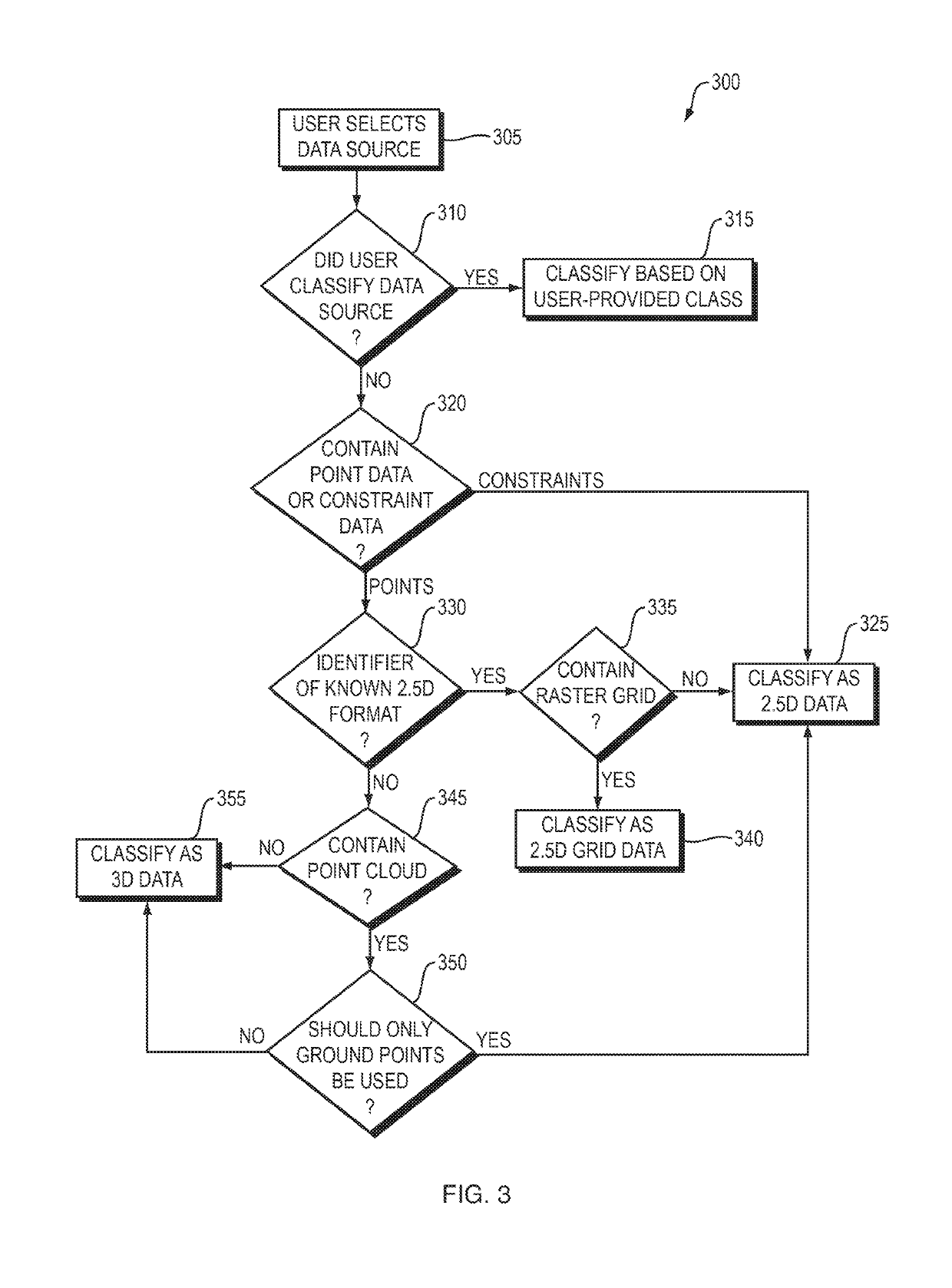Hybrid mesh from 2.5D and 3D point data
a point data and hybrid technology, applied in the field of reconstructing and analyzing mesh surfaces, can solve the problems of difficult to reconstruct and analyze a combination of difficult to apply the same 3d capable reconstruction algorithm to both 2.5d and 3d data, and inefficient application of the same 3d capable reconstruction algorithm
- Summary
- Abstract
- Description
- Claims
- Application Information
AI Technical Summary
Benefits of technology
Problems solved by technology
Method used
Image
Examples
Embodiment Construction
[0019]FIG. 1 is a block diagram of an example electronic device 100 (e.g., a computer) that may be used with the present techniques. The electronic device includes a central processing unit (CPU) 110 that may be coupled to a chipset 120 by a front side bus 115. The chipset 120 includes a memory controller hub 125 that is responsible for communications with high-speed devices such as system memory 130 and a graphics subsystem (e.g., a graphics card) 140. The memory controller hub 125 is coupled to the system memory 130 by a high-speed memory bus 135. The system memory 130 is typically volatile memory, such as a Random Access Memory (RAM), which is adapted to store a wide range of software and data being actively used by the CPU 110. The memory controller hub 125 is coupled to a graphics subsystem 140 (e.g., a graphics card) by a high-speed graphics bus 145. The graphics subsystem 140 includes a GPU 150 and graphics memory 155, among other components. The graphics subsystem 140 is cou...
PUM
 Login to View More
Login to View More Abstract
Description
Claims
Application Information
 Login to View More
Login to View More - R&D
- Intellectual Property
- Life Sciences
- Materials
- Tech Scout
- Unparalleled Data Quality
- Higher Quality Content
- 60% Fewer Hallucinations
Browse by: Latest US Patents, China's latest patents, Technical Efficacy Thesaurus, Application Domain, Technology Topic, Popular Technical Reports.
© 2025 PatSnap. All rights reserved.Legal|Privacy policy|Modern Slavery Act Transparency Statement|Sitemap|About US| Contact US: help@patsnap.com



